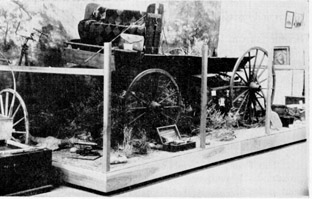| page 196
ARIZONA PIONEER
MORMON
by way
of Moencopie (near Tuba City), which was headquarters for the Indian Mission
for Arizona and New Mexico.
The following
extracts I have had copied from President Woodruff's Journal in the Church
Historian's Library:
April 17,
1879. We left Moen Copy (sic) to visit the San Francisco Mountains. We
drove to Little Colorado--the first time I ever saw that river. John W.
Young, William Gibbons and myself forded the river.
Gleanings
from journal, August 13, 1879. President
Woodruff visited Round Valley, staying with Brother Christopherson and
"went up the creek with Jacob Hamblin and Brother Christopherson and caught
10 trout."
During
a later time in August and early September, be visited the Zuni Village
and the Isletas and Lagunas, all in New Mexico. He was in Snowflake September
26, 1879, and
stayed at the home of Jesse N. Smith.
San Francisco
Mountains, November 22, 1879. On the road today I saw some 300 antelope
... they had been driven out of the mountains by a snowstorm into the cedars.
They were in flocks like a flock of sheep. By this time a messenger arrived
from Sunset and brought me six letters ... and one from Ammon M. Tenney,
which was a very important one. He bad made a bargain with Mr. Barth, the
Jew, to buy out St. Johns water and land for 750 cows to be paid for in
one year. He had the offer of the place for the sum and was waiting for
reply to know if he should buy it. I was very weary and thought I would
stop until Tuesday morning and go to Sunset and write Brother Tenney an
answer. I went to bed and slept until 12 O'clock and I awoke, and my monitor,
guide, or Spirit of the Lord, call it what name you will, said to me, "Arise,
tarry not, go to Sunset. Counsel A. M. Tenney to close
|
